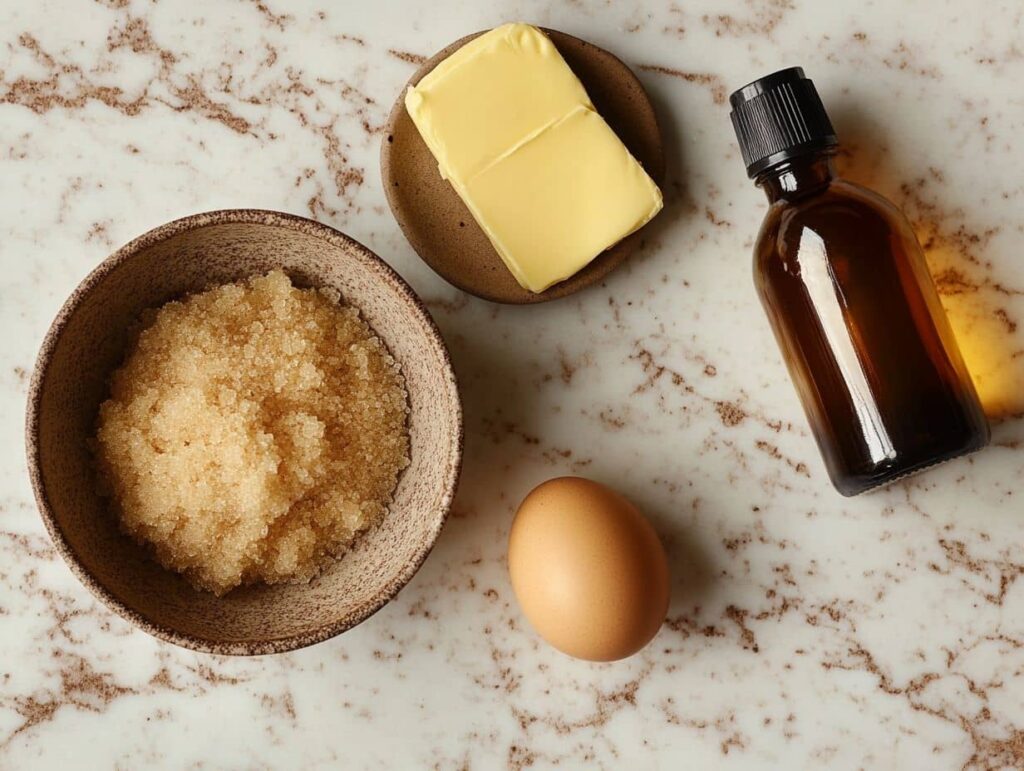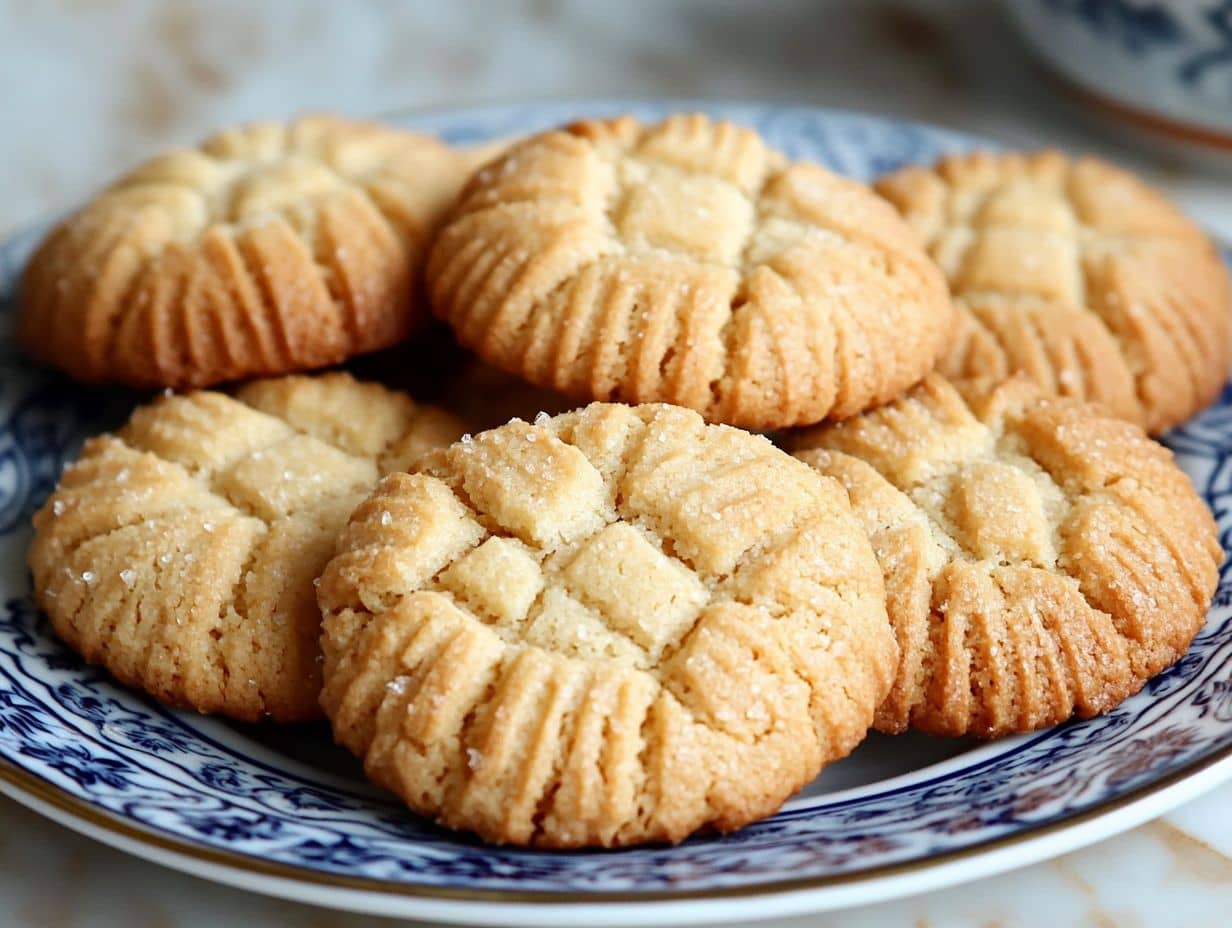What is the secret ingredient to keep cookies soft? Baking at home is always exciting, especially when you achieve that soft, chewy, and flavorful bite. But keeping them soft after they cool can be tricky. Many bakers face this challenge, but don’t worry we’re here to reveal the secret ingredient and share expert tips to ensure every batch stays perfectly soft and delicious.
Table of Contents
The Mystery of Soft Cookies
Have you ever pulled a tray of fresh cookies out of the oven, only to find that they harden as soon as they cool? It’s frustrating when the cookies don’t turn out the way you expect, especially after all the time and effort you put into mixing and baking. But the good news is that the secret to keeping cookies soft isn’t just about baking time or temperature it’s in the ingredients!
In this article, we’re going to explore the key factors that make cookies soft and reveal which ingredients hold the magic. Whether you’re a seasoned baker or just getting started, understanding these simple tricks can help you bake cookies that are always soft, chewy, and downright irresistible. Let’s dive in and figure out what the secret ingredient is to keep cookies soft. 😋
To perfect your cookie game, you might also explore ideas like how long a batch of cookies lasts to manage your treats for optimal enjoyment.
Why Do Cookies Become Hard?
Before we can talk about how to make cookies soft, it’s important to understand why they turn hard in the first place. Cookie texture is affected by several factors, ranging from the ingredients used to how you bake them. Understanding these factors will help you figure out what you can change in your baking process to keep cookies soft. Let’s look at some common reasons cookies become hard.
Common Factors That Cause Cookies to Become Hard
There are a few key reasons your cookies might turn out hard. First off, it’s easy to make the mistake of overbaking them, even by just a minute or two. When cookies bake too long, they lose moisture, which makes them dry and crunchy instead of soft and chewy. Even the ingredients you use can make a difference. For example, using too much flour or not enough fat can result in a tough cookie dough that produces hard cookies.
Another common mistake is not properly measuring your ingredients. For instance, if you add too much sugar, your cookies might become crispy and lose that desired soft texture. The ratio of wet to dry ingredients is essential to achieving the perfect cookie consistency. So, how can we make sure that doesn’t happen? Let’s explore what we can do to keep cookies soft in the next sections. 👩🍳
If you’re looking for ideas to bake in smaller quantities, check out small-batch chocolate chip cookies for inspiration.
The Importance of Texture in Cookie Baking
Texture is everything when it comes to cookies. Some people love a crispy cookie, but most of us crave that soft, chewy bite. So, why is texture such a big deal? Think of it like this: texture is the difference between biting into a crunchy, dry cookie and one that melts in your mouth. Texture is created by the way ingredients interact during the baking process, and this is where your choices as a baker really matter.
Let’s break down a few key ingredients that can make or break the texture of your cookies:
Understanding the Role of Ingredients

The basic ingredients in most cookie recipes flour, butter, eggs, sugar, and leavening agents play a major role in determining the texture. Flour provides structure, while butter adds moisture and tenderness. Sugar helps with flavor and browning, and eggs contribute to moisture and binding. The balance between these ingredients is key to getting that soft, chewy texture.
But there’s more to it than just having the right ingredients. The way you combine them is just as important. For instance, overmixing your dough can lead to a tougher cookie. We’ll discuss the best mixing techniques later on to ensure your cookies are as soft as possible.
How the Baking Process Affects Texture
Once your dough is mixed and ready, it’s time to bake! The baking process is where the magic happens. When cookies are baked, the heat causes the fat in the dough (like butter) to melt, while the water in the dough turns into steam. This creates air pockets that give the cookies a light and airy texture. If cookies are baked too long, though, the water evaporates, and the cookies will become dry and hard.
In addition to baking time, the temperature of your oven matters too. If your oven is too hot, the cookies might spread too quickly and end up thin and crispy. If the oven is too cool, they might not bake evenly, leading to an undercooked, doughy center. Finding the right balance is crucial to ensuring your cookies come out soft and perfect every time.
Key Ingredients That Help Keep Cookies Soft
Now, let’s talk about the key ingredients that can help you achieve soft cookies. While there isn’t one magical ingredient that makes cookies soft, there are some ingredients that have a much bigger impact than others. Let’s take a closer look at these ingredients and how they contribute to the perfect cookie texture.
The Role of Butter vs. Margarine
Butter is a must-have for most cookie recipes, and for good reason. It adds flavor and moisture, which are essential for keeping cookies soft. But what about margarine? While margarine can work in some cases, butter tends to create a better texture and flavor for soft cookies. The fat in butter helps keep the dough moist, while margarine often contains more water, which can cause the dough to spread too thin and become crispier.
If you want your cookies to be soft and chewy, butter is the way to go. Just be sure to use room-temperature butter so that it mixes evenly into the dough!
Brown Sugar vs. White Sugar: Which Keeps Cookies Soft?
When it comes to sugar, the type you use can make a big difference in the texture of your cookies. Brown sugar contains molasses, which gives cookies extra moisture and chewiness. White sugar, on the other hand, tends to make cookies crispier because it doesn’t have that added moisture.
For soft cookies, brown sugar is the better choice. It helps trap moisture, which keeps the cookies from drying out too quickly. If you want a soft, chewy cookie with that perfect texture, brown sugar should be your go-to. If you want to experiment, try using a mixture of both brown and white sugar for a balanced texture.
Eggs: The Secret Moisture Element
Eggs play a crucial role in keeping cookies soft. They bind the ingredients together, but more importantly, they add moisture. The protein and fat in eggs help create a chewy texture by trapping moisture inside the dough. Without eggs, cookies would be dry and crumbly. Eggs also help cookies rise by providing structure during baking. So, if you’re looking for soft, chewy cookies, don’t skimp on the eggs!
The Magic of Cornstarch in Soft Cookies
One lesser-known ingredient that can make a big difference in cookie texture is cornstarch. Adding a small amount of cornstarch to your cookie dough can make them even softer and more tender. Cornstarch works by preventing the dough from spreading too much during baking, resulting in a thicker, softer cookie. It helps create that pillowy, melt-in-your-mouth texture we all love. Just a tablespoon or two can work wonders!
The Right Flour for Soft Cookies
Choosing the right type of flour is another key element in baking soft cookies. Different types of flour have different protein contents, which affects how much gluten forms in your dough. Gluten is what gives cookies structure, but too much gluten can make them tough and chewy in a bad way. You need a delicate balance of structure and tenderness to get the perfect soft cookie.
All-Purpose Flour vs. Cake Flour
For soft cookies, cake flour is your best option. Cake flour has a lower protein content than all-purpose flour, which means it produces less gluten and results in a softer, lighter texture. If you don’t have cake flour on hand, you can substitute it with all-purpose flour, but you might want to add a tablespoon of cornstarch to help soften the dough. All-purpose flour can still produce good cookies, but cake flour is the secret to getting that extra softness.
How to Achieve the Perfect Dough Consistency
Now that you know about the ingredients, let’s talk about how to mix them to get the perfect dough consistency. The texture of your dough will determine the texture of your cookies, so getting this step right is essential. Let’s look at a few techniques that will help you achieve that soft, chewy dough.
The Importance of Chilling the Dough
One trick that many bakers swear by is chilling the dough. Chilling your dough for at least 30 minutes before baking helps the fat solidify, which prevents the cookies from spreading too much in the oven. This helps the cookies maintain a thicker, softer texture. Chilling also helps the flour fully absorb the moisture from the other ingredients, resulting in a more even dough consistency.
So, if you want soft cookies, don’t skip the chill time!
How to Mix Dough for Optimal Softness
When mixing your dough, be careful not to overmix it. Overmixing can cause too much gluten to develop, which will make the cookies tough. Instead, mix until the ingredients are just combined. If you see streaks of flour, that’s okay just keep mixing gently. The less you handle the dough, the softer your cookies will be.
The Perfect Baking Time and Temperature for Soft Cookies
So now you’ve got your dough prepared and ready to go! But how do you make sure that your cookies come out soft and chewy, not overcooked and hard? The secret lies in the baking time and temperature. It might seem simple, but adjusting these factors can make a big difference in achieving the perfect texture. Let’s break it down.
The Science Behind Baking Time and Temperature
The key to soft cookies is baking them just long enough to set the edges while keeping the center slightly underbaked. If you bake your cookies too long, they’ll dry out and become crunchy. If you don’t bake them long enough, they might remain too doughy and fall apart. The perfect balance is essential to keep that soft and chewy texture we all love!
Most cookie recipes recommend baking at a temperature of 350°F (175°C), but depending on your oven and the size of your cookies, you might need to adjust this. If your oven tends to run hot, consider lowering the temperature slightly to avoid overbaking. On the other hand, if your cookies spread too much or stay too soft in the center, increasing the temperature by 10-15 degrees could help them bake more evenly.
Tips for Avoiding Overbaking
Overbaking is one of the most common reasons cookies turn out hard. But how do you know when they’re perfectly baked? A great way to tell is by watching for the edges of the cookies to turn golden brown. The center should still look a little soft and puffy, but don’t worry it will firm up as the cookies cool. It’s always better to underbake slightly than to overbake!
Another tip is to remove the cookies from the oven when they’re just starting to spread out and look a little golden at the edges. They will continue to cook from the residual heat even after you take them out, which helps them keep that soft and chewy texture. If you like your cookies extra soft, consider taking them out when they look slightly underdone.
Using Secret Add-ins to Keep Cookies Soft
Want to take your cookies to the next level? There are a few secret ingredients you can add to your dough that can make your cookies even softer and more delicious. These little tricks will give you the ultimate soft, chewy cookie every time. Let’s explore some of the best add-ins for achieving that perfect texture!
Adding Sour Cream or Yogurt for Softness
Yes, sour cream and yogurt are not just for your morning breakfast! Adding a small amount of sour cream or yogurt to your cookie dough can make a huge difference. These ingredients add moisture and acidity, which helps create a tender, soft texture. Sour cream, in particular, gives cookies a slightly tangy flavor and a super soft bite. Yogurt, especially Greek yogurt, also works wonders for softness and adds a subtle creaminess to the dough.
If you’re looking for an extra-soft cookie, try replacing a bit of the butter or eggs with sour cream or yogurt. You’ll be amazed at how much softer and fluffier the cookies turn out!
The Effect of Adding Honey or Molasses
If you want to add a touch of sweetness and extra moisture to your cookies, consider adding honey or molasses. These liquid sweeteners add moisture, which helps keep the cookies soft. They also contribute a rich, caramel-like flavor that makes your cookies stand out.
Honey is a great option if you’re looking for a subtle floral sweetness, while molasses will add a deeper, more robust flavor. Both ingredients can help keep your cookies from drying out and ensure they remain soft for days. Try swapping out a portion of the sugar with honey or molasses for cookies that are extra chewy.
Common Mistakes to Avoid When Baking Soft Cookies
Baking soft cookies sounds simple, but there are a few common mistakes that can get in the way of success. These slip-ups can prevent your cookies from reaching their full potential. Let’s take a look at some of the most common errors and how you can avoid them to ensure your cookies turn out perfectly every time. learn more about what defines one batch of cookies for precision.
Overmixing or Undermixing the Dough
One mistake many bakers make is overmixing the dough. When you mix cookie dough too much, it develops too much gluten, which results in dense, tough cookies. Instead, mix the dough just until the ingredients are incorporated. It’s okay if the dough is a little bit lumpy just don’t overwork it!
On the flip side, not mixing enough can also cause problems. If the dough is undermixed, your cookies might not hold together well, and they may turn out uneven. The key is to mix until everything is just combined, so your cookies are soft and tender without being too tough or crumbly.
Using the Wrong Baking Sheet or Pan
Another mistake people make is using the wrong baking sheet or pan. Dark-colored baking sheets tend to absorb more heat, which can cause cookies to overbake or burn on the bottom. To prevent this, opt for light-colored or shiny baking sheets, which reflect heat more evenly. If you’re using a non-stick pan, be extra careful about the temperature, as these pans can cause cookies to bake too quickly or unevenly.
Also, make sure your baking sheet is cool before you place the dough on it. If the pan is too warm, it can cause the cookies to spread too much, resulting in flat, crispy cookies.
FAQ – How to Keep Cookies Soft
What is the secret ingredient to keep cookies soft?
The secret lies in using key ingredients such as butter, brown sugar, and eggs for moisture. Adding cornstarch or yogurt can also make your cookies even softer. Additionally, baking at the right temperature and time is crucial to keeping them soft.
Why do cookies become hard after cooling?
Cookies become hard when they’re overbaked or if the dough lacks sufficient moisture. Factors like using too much flour, insufficient fat, or incorrect baking times can also contribute to a dry, crunchy texture.
What’s the difference between brown sugar and white sugar in cookie texture?
Brown sugar contains molasses, which helps retain moisture and creates a chewier texture. White sugar, on the other hand, tends to make cookies crispier. For soft cookies, brown sugar is the best choice.
Conclusion: What is the secret ingredient to keep cookies soft?
There you have it! By using the right ingredients, mixing techniques, and baking methods, you can create soft, chewy cookies every time. Key tips include using butter, brown sugar, and eggs for moisture, while adding a little cornstarch or yogurt for extra softness. 🍪
Don’t forget the baking process! Keep an eye on your baking time and temperature underbake slightly and let them firm up as they cool. Proper storage in an airtight container with a slice of bread will help keep them soft for days.

